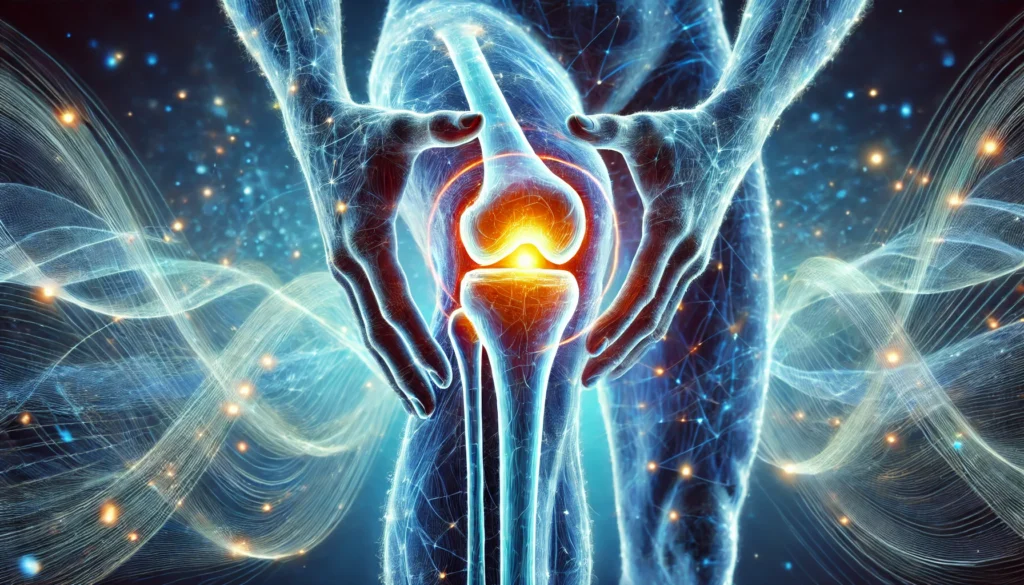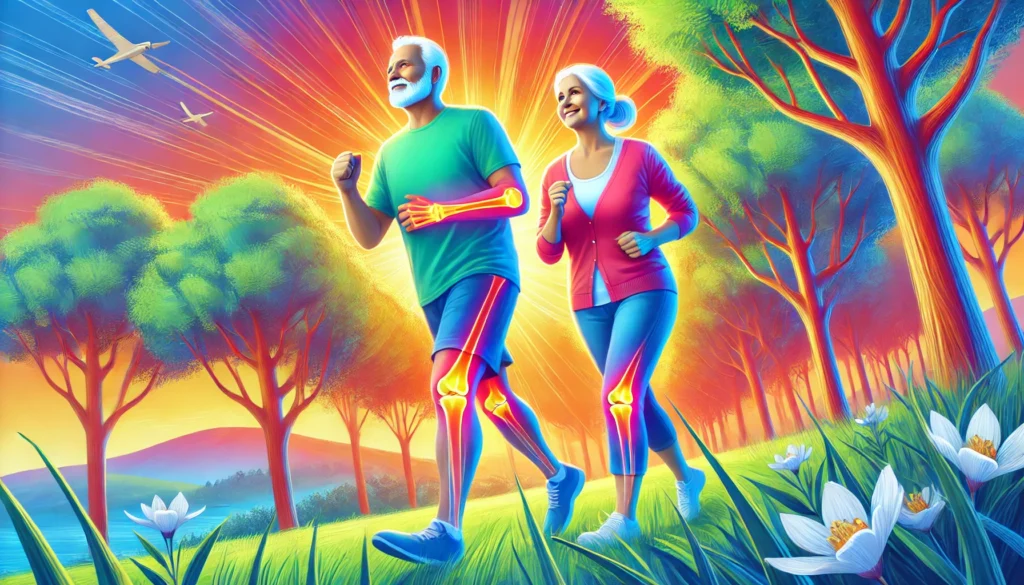Understanding Joint Inflammation and Its Impact on Athletes
Joint inflammation is a common concern among athletes and fitness enthusiasts. It occurs when the body’s immune response triggers swelling, pain, and stiffness in the joints, often as a result of overuse, injury, or chronic conditions such as arthritis. For those engaging in intense physical activity, inflammation can be a barrier to performance, slowing down recovery and increasing the risk of long-term joint damage. Understanding how to reduce joint inflammation quickly is essential for maintaining mobility, enhancing recovery, and optimizing overall athletic performance.
Inflammation serves a protective role, helping to repair damaged tissues. However, when inflammation becomes excessive or chronic, it can hinder recovery rather than aid it. Identifying the underlying causes of inflammation—whether they stem from acute injuries, repetitive stress, or systemic health issues—allows athletes to adopt targeted strategies that promote healing and regeneration. By employing a combination of dietary, lifestyle, and therapeutic interventions, athletes can mitigate joint inflammation efficiently and return to peak performance more swiftly.

The Role of Nutrition in Reducing Joint Inflammation
Diet plays a crucial role in modulating inflammation within the body. Certain foods possess powerful anti-inflammatory properties, while others exacerbate inflammation and should be avoided. Athletes seeking to reduce joint inflammation quickly should prioritize a nutrient-rich diet that supports tissue repair and immune balance.
One of the most effective dietary approaches involves increasing the intake of omega-3 fatty acids, which are found in fatty fish like salmon, mackerel, and sardines. These essential fats have been shown to reduce pro-inflammatory cytokines, thereby decreasing joint swelling and stiffness. Additionally, plant-based sources such as flaxseeds and chia seeds offer an excellent alternative for those who do not consume fish. Incorporating turmeric, a potent anti-inflammatory spice rich in curcumin, can further support joint health by inhibiting inflammatory pathways.
Conversely, processed foods high in trans fats, refined sugars, and artificial additives contribute to systemic inflammation and should be minimized. Athletes should avoid excessive consumption of refined carbohydrates, which can lead to spikes in blood sugar and increase inflammatory markers. By replacing these with whole grains, leafy greens, and antioxidant-rich berries, individuals can support their body’s natural ability to heal and recover efficiently.

Hydration and Its Role in Joint Health
Proper hydration is often overlooked in the discussion of joint inflammation, yet it is fundamental to maintaining joint lubrication and reducing stiffness. Water helps transport nutrients to cartilage and flush out toxins that contribute to inflammation. Dehydration can exacerbate joint discomfort, making it essential for athletes to maintain optimal fluid balance.
Consuming electrolyte-rich beverages, particularly those containing magnesium and potassium, can further enhance hydration and reduce muscle cramps that may accompany joint inflammation. Coconut water, herbal teas, and diluted natural juices offer excellent hydration options without the added sugars and artificial ingredients found in many commercial sports drinks. Furthermore, bone broth, which is rich in collagen and amino acids, provides additional support for joint regeneration and inflammation reduction.

The Importance of Rest and Sleep in Recovery
Recovery is a critical component of any athletic regimen, and sleep plays a pivotal role in reducing joint inflammation quickly. During sleep, the body undergoes repair processes that help mitigate inflammation and promote tissue healing. Athletes who do not get adequate rest may experience prolonged recovery times and an increased risk of chronic inflammation.
Optimizing sleep hygiene can significantly enhance the body’s ability to heal. Creating a consistent sleep schedule, minimizing blue light exposure before bed, and maintaining a cool, dark sleeping environment can all contribute to higher-quality rest. Additionally, incorporating relaxation techniques such as deep breathing or meditation can reduce stress-related inflammation and support overall recovery.
Supplementation for Faster Recovery and Inflammation Reduction
While a well-balanced diet is the foundation of joint health, certain supplements can provide additional support in reducing inflammation and promoting faster recovery. Glucosamine and chondroitin are well-known for their role in maintaining cartilage integrity and reducing joint pain. Athletes who experience frequent joint discomfort may benefit from incorporating these into their daily regimen.
Other beneficial supplements include bromelain, an enzyme derived from pineapples that has been shown to reduce swelling and improve recovery after intense physical exertion. Additionally, vitamin D plays a crucial role in immune function and bone health, helping to prevent joint deterioration. Ensuring adequate levels of this essential vitamin can enhance the body’s ability to manage inflammation and promote long-term joint resilience.
The Role of Physical Therapy and Active Recovery
Engaging in appropriate physical therapy exercises and active recovery techniques can significantly contribute to reducing joint inflammation. Low-impact activities such as swimming, cycling, and yoga can promote blood flow to inflamed joints without adding undue stress. These activities facilitate the movement of synovial fluid, which lubricates the joints and helps flush out inflammatory byproducts.
Additionally, techniques such as foam rolling, massage therapy, and cryotherapy can provide immediate relief for inflamed joints. Applying cold therapy to affected areas helps constrict blood vessels, reducing swelling and numbing pain. Conversely, alternating with heat therapy can enhance circulation and promote relaxation of surrounding muscles. Implementing these recovery strategies consistently can accelerate healing and minimize joint discomfort over time.
Frequently Asked Questions (FAQ) on Arthritis and Joint Inflammation
What are some advanced strategies for how to reduce arthritis swelling beyond conventional treatments?
Reducing arthritis swelling requires a combination of advanced strategies beyond standard anti-inflammatory medications. Cold laser therapy, for instance, is gaining traction as a non-invasive way to promote cellular repair and reduce inflammation in joints. Additionally, intermittent fasting has been studied for its role in reducing systemic inflammation, which can help in healing arthritis over time. Another promising approach involves biofeedback therapy, where patients learn to control physiological responses that contribute to inflammation. Combining these methods with targeted supplements such as turmeric extract (curcumin) and omega-3 fatty acids enhances the body’s ability to manage swelling effectively.
How can someone effectively learn how to reduce joint inflammation quickly using innovative techniques?
Innovative techniques such as infrared sauna therapy and cryotherapy offer immediate relief from joint inflammation. Infrared saunas penetrate deep into tissues, promoting circulation and reducing inflammatory markers, while cryotherapy exposes the body to extreme cold for rapid anti-inflammatory effects. Another effective method is hydrotherapy, where alternating between hot and cold water immersion can enhance blood flow and reduce stiffness. Mind-body interventions like guided meditation with visualization techniques can also accelerate recovery by altering stress-induced inflammatory responses. These approaches, combined with an anti-inflammatory diet, significantly improve outcomes for those seeking rapid relief.
What are the key lifestyle adjustments that help in how to prevent joint inflammation long-term?
Preventing joint inflammation requires long-term commitment to lifestyle modifications that focus on reducing systemic inflammation. A major factor is maintaining a stable blood sugar level since spikes in glucose can trigger inflammatory responses in the joints. Engaging in consistent, low-impact exercises such as tai chi or aquatic therapy ensures joint mobility without causing excessive wear. Sleep optimization plays a critical role as poor sleep contributes to chronic inflammation; establishing a solid bedtime routine can significantly lower inflammatory markers. Additionally, environmental toxin exposure—such as air pollutants and heavy metals—can exacerbate joint inflammation, making detoxification practices like sauna use and organic eating beneficial. Integrating these adjustments into daily life creates a sustainable approach to joint health.
Is it really possible to learn how to reverse arthritis, and if so, what are the most effective methods?
While conventional medicine often views arthritis as a progressive disease, emerging research suggests that it is possible to reverse arthritis under the right conditions. Regenerative medicine techniques, including stem cell therapy and platelet-rich plasma (PRP) injections, have shown promise in repairing damaged joint tissue. Another key aspect is addressing gut health—dysbiosis, or an imbalance of gut bacteria, has been linked to increased joint inflammation. A strict anti-inflammatory diet rich in polyphenols, such as green tea and dark berries, supports gut integrity and reduces autoimmune responses. Strength training, when done correctly, can also help rebuild joint support structures, further aiding in reversing arthritis symptoms.
How does emotional well-being influence how to reduce arthritis swelling?
Stress and negative emotions have a profound impact on arthritis-related inflammation. Chronic stress triggers the release of cortisol, which, over time, can contribute to joint swelling and pain. Practicing mindfulness techniques such as breathwork and progressive muscle relaxation helps lower stress-induced inflammation. Cognitive behavioral therapy (CBT) has been effective in reducing pain perception and breaking the cycle of stress-related flare-ups. Studies have also shown that individuals with a strong social support system experience lower levels of inflammatory markers, making community engagement a powerful tool for healing arthritis. By addressing emotional health alongside physical treatments, arthritis swelling can be managed more effectively.
What are some financial strategies to afford advanced treatments for how to reduce joint inflammation quickly?
Advanced treatments like stem cell therapy or biologic medications can be costly, but there are financial strategies to make them more accessible. Health Savings Accounts (HSAs) and Flexible Spending Accounts (FSAs) allow individuals to allocate pre-tax dollars toward these treatments. Some clinics offer financing plans or medical credit options, such as CareCredit, to help manage expenses. Additionally, medical tourism is an emerging trend where individuals travel to countries with lower treatment costs without compromising quality. Researching grants or clinical trials that offer free or reduced-cost experimental treatments is another viable strategy. Combining these financial tools can make cutting-edge joint inflammation treatments more affordable.
What role does the microbiome play in how to prevent joint inflammation?
The gut microbiome plays a crucial role in regulating immune function and inflammation, directly impacting joint health. Certain bacterial strains, such as Lactobacillus and Bifidobacterium, have been linked to reduced joint inflammation. A diet high in fiber-rich foods, like legumes and fermented vegetables, promotes a healthy gut environment. Avoiding processed foods and excessive sugar is essential, as they can trigger dysbiosis and increase inflammatory cytokines. Probiotic supplementation, when combined with prebiotic-rich foods, enhances the gut-joint connection and significantly lowers the risk of chronic inflammation. By maintaining gut health, individuals can prevent joint inflammation before it becomes problematic.
Can specific movement patterns contribute to how to reverse arthritis?
Yes, targeted movement patterns can significantly contribute to reversing arthritis. Eccentric strengthening exercises, where muscles lengthen under tension, have been shown to reduce joint strain and improve mobility. Techniques like proprioceptive neuromuscular facilitation (PNF) stretching enhance flexibility while protecting joint structures. Additionally, functional movement training, which focuses on real-life motions rather than isolated exercises, helps reestablish proper joint mechanics. Yoga and pilates, when practiced with a focus on alignment, can rebuild strength around affected joints, promoting long-term healing. Incorporating these movement patterns fosters joint recovery and supports the reversal of arthritis symptoms.
What are the future trends in healing arthritis that could revolutionize treatment?
The future of healing arthritis is evolving with groundbreaking developments in regenerative medicine. Personalized medicine, where treatments are tailored based on genetic and biomarker analysis, is expected to enhance therapeutic outcomes. Nanotechnology-based drug delivery systems are being explored to target inflammation at a cellular level with minimal side effects. Artificial intelligence (AI) is also being integrated into diagnostics, allowing for early detection and prevention of arthritis before symptoms manifest. Additionally, wearable technology that tracks joint health and provides real-time feedback on movement patterns is gaining popularity. These innovations are shaping a future where arthritis can be managed with precision and effectiveness.
How do environmental factors contribute to how to reduce arthritis swelling?
Environmental factors such as air pollution, chemical exposure, and even climate fluctuations significantly influence arthritis swelling. Heavy metals like lead and mercury can accumulate in the body, triggering immune responses that exacerbate joint inflammation. Mold exposure is another hidden culprit that can contribute to autoimmune-related arthritis. Seasonal changes, particularly humidity and barometric pressure fluctuations, can impact joint fluid dynamics and increase pain. Detoxification methods such as activated charcoal supplementation, infrared saunas, and regular outdoor exposure in clean-air environments can help mitigate these effects. Understanding and controlling environmental triggers is a crucial but often overlooked aspect of reducing arthritis swelling.
Conclusion: A Holistic Approach to Joint Health
Reducing joint inflammation quickly requires a multifaceted approach that encompasses nutrition, hydration, rest, supplementation, and strategic recovery techniques. By understanding the factors that contribute to inflammation and taking proactive measures to address them, athletes can enhance their overall performance, reduce downtime, and protect their long-term joint health. Implementing these proven strategies not only accelerates recovery but also fosters resilience against future injuries, allowing individuals to continue pursuing their athletic goals with confidence.
athletic recovery, joint inflammation remedies, reducing arthritis swelling, sports injury recovery, natural inflammation relief, omega-3 for joint health, turmeric for arthritis, hydration for joint pain, sleep and inflammation, best supplements for joint recovery, glucosamine benefits, active recovery exercises, cold therapy for inflammation, healing arthritis naturally, preventing joint inflammation, chondroitin for joint support, collagen for joint health, anti-inflammatory diet, sports performance optimization, muscle recovery strategies.
Further Reading:
Foods for Fighting Inflammation, Arthritis and Joint Pain
Finding the Best Joint Pain Relief for You: 24 Treatment Options
The information contained in this article is provided for general informational purposes only and is not intended to serve as medical, legal, or professional advice. While NewsHealthWatch strives to present accurate, up-to-date, and reliable content, no warranty or guarantee, expressed or implied, is made regarding the completeness, accuracy, or adequacy of the information provided. Readers are strongly advised to seek the guidance of a qualified healthcare provider or other relevant professionals before acting on any information contained in this article. NewsHealthWatch, its authors, editors, and contributors expressly disclaim any liability for any damages, losses, or consequences arising directly or indirectly from the use, interpretation, or reliance on any information presented herein. The views and opinions expressed in this article are those of the author(s) and do not necessarily reflect the official policies or positions of NewsHealthWatch.

